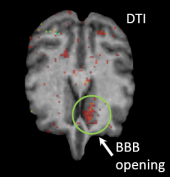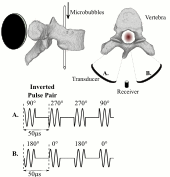Contrast-free detection of focused ultrasound-induced blood-brain barrier opening using diffusion tensor imaging
https://www.embs.org/tbme/wp-content/uploads/sites/19/2021/07/TBME-01316-2020-Highlight-Image.png
170
177
IEEE Transactions on Biomedical Engineering (TBME)
//www.embs.org/tbme/wp-content/uploads/sites/19/2022/06/ieee-tbme-logo2x.png
Karakatsani et al. report a contrast-free method to detect focused ultrasound (FUS)-induced blood-brain barrier (BBB) opening using diffusion tensor imaging (DTI). The localized BBB opening was hypothesized to result to a transient change in the diffusion pattern of water molecules and was tested in a non-human primate model, which closely resembled the human anatomy. They found that fractional anisotropy within the targeted area increased by 82% after the procedure, showing that DTI can confirm BBB opening without the use of contrast agents, increasing the safety of the methodology since contrast does not have to cross into the brain parenchyma.
read more


